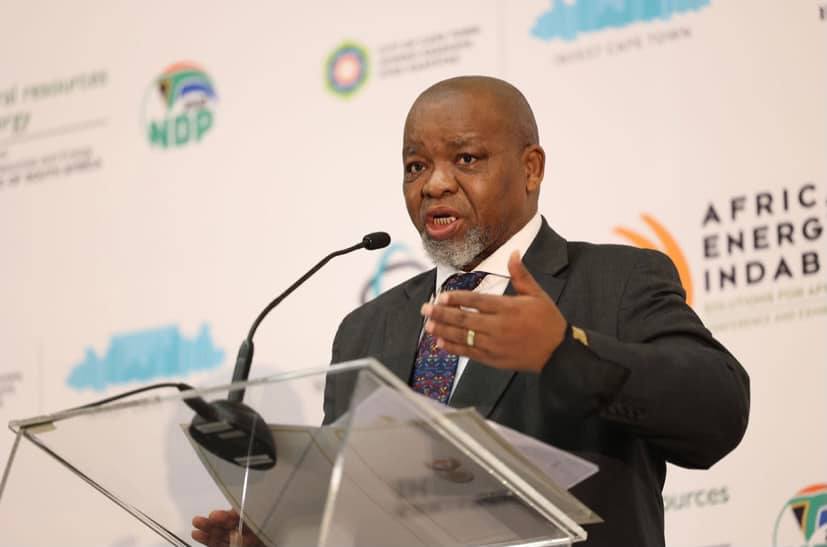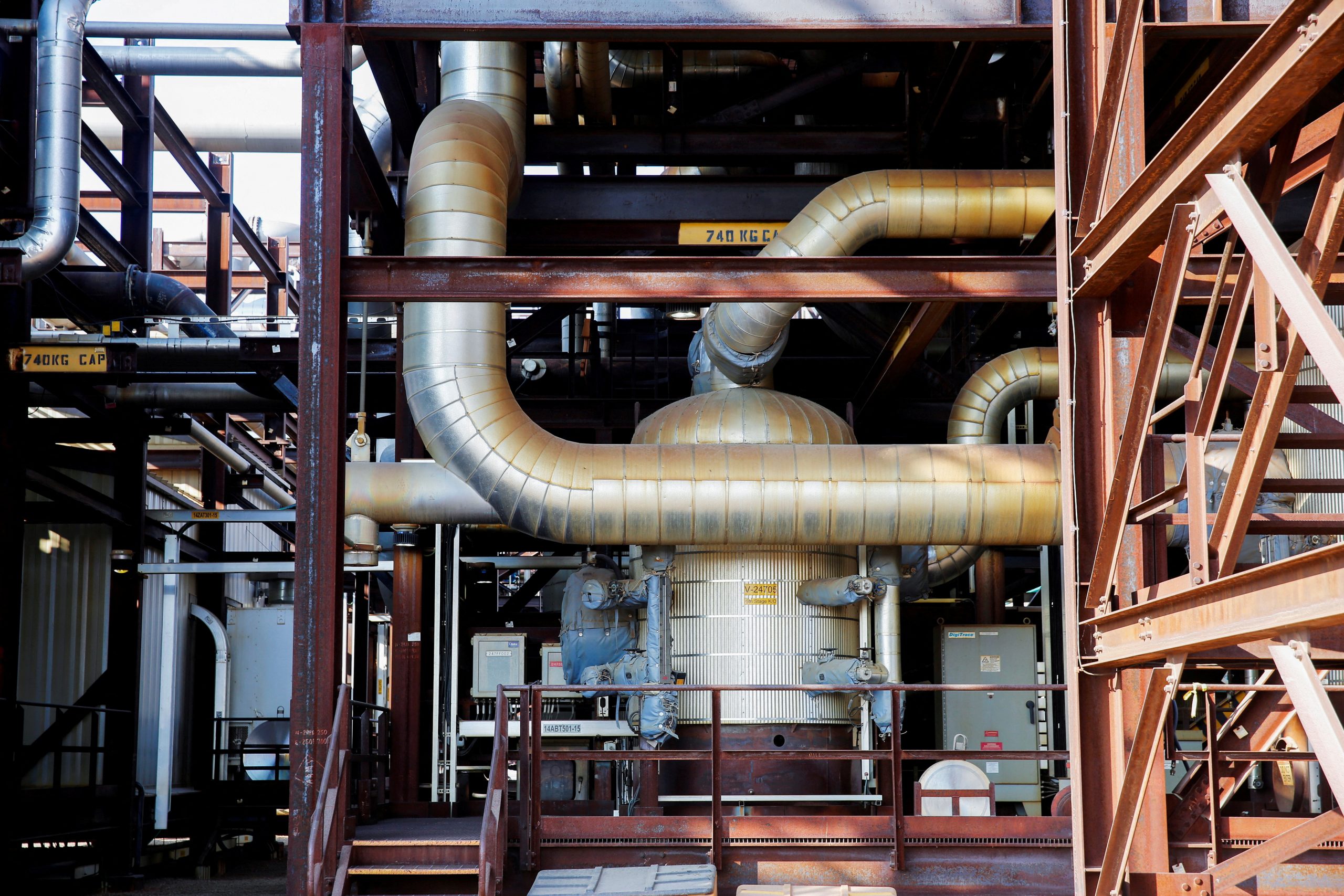South Africa’s Minister of Energy, Honourable Gwede Mantashe, expresses optimism about his country’s energy future, highlighting past achievements, new discoveries, challenges, and plans for a successful transition to renewables.
————————

African Energy Transitioning from aspiration to action to deliver a sustainable and prosperous future signifies South Africa’s commitment to moving beyond mere aspirations to take concrete steps towards a sustainable energy future. For South Africa, leveraging our energy sector drives economic growth and prosperity. We want to drive the energy sector to become a flywheel of South Africa’s economic growth, eradicate energy poverty in South Africa and on the African continent, and achieve a just energy transition from high to low carbon emissions.
Progress made through the IPPP and the IRP
At the center of our actions to achieve these intertwined objectives was a rigorous implementation of South Africa’s electricity infrastructure development plan, the Integrated Resource Plan (IRP), which identified a diversified energy mix required to meet the expected electricity demand growth and reduce carbon emissions.
South Africa in 2011 also introduced the Independent Power Producer Procurement Program to reduce the country’s reliance on a single or a few primary energy sources, stimulate an indigenous renewable energy industry, and contribute to socio-economic development and environmentally sustainable growth.
As detailed during the Parliamentary Debate on the State of the Nation Address, the 6th administration has, through the IPP Office, procured a total of five thousand nine hundred and thirty-nine megawatts (5 939 MW) from 46 IPPs. In this capacity:
- One hundred and fifty megawatts (150 MW) from Scatec Projects have been connected to the grid and supply the much-needed electricity.
- One thousand, five hundred and eighty-seven megawatts (1 587 MW) from 15 IPPs are currently under construction and expected to supply electricity to the grid from September 2024 onwards.
- One thousand, three hundred and sixty megawatts (1 360 MW) from 10 IPPs are preparing to reach commercial close.
- Two thousand, eight hundred and forty-two megawatts (2 842 MW) from 18 IPPs failed to reach commercial close for various reasons.
Informed by the existing IRP 2019, the 6th administration has further issued Requests for Proposals (RFPs) for the procurement of:
- Five thousand megawatts (5000 MW) under Bid Window 7 of the Renewable Energy Independent Power Producer Procurement Programme (REIPPPP)
- Two thousand megawatts (2000 MW) under Bid Window 1 of Gas-to-Power
- Six hundred and fifteen megawatts (615 MW) under Bid Window 2 of Battery Energy Storage.
We are convinced that it is possible to institute clean coal technologies cost-competitively to transition justly from the high-to-low carbon dioxide economic development trajectory.
We further intend to issue RFPs to procure a combined five thousand six hundred sixteen megawatts (5616 MW) for Bid Window 8 of renewable energy and the 3rd Bid Window of battery storage by the end of the current financial year. This capacity will add up to seven thousand three hundred and twenty-seven megawatts (7327 MW) procured by the previous administrations since the launch of the IPP Program.
Challenges hindering progress in ensuring a reliable energy supply
We are conscious of the challenges that hinder our progress toward ensuring reliable energy supply to consumers, which include limited grid capacity, the intermittent nature of renewable energy, and the decline in the Energy Availability Factor (EAF) due to aging infrastructure. Hence, the South African government continues to invest efforts and resources to arrest the decline in the EAF and resolve the grid capacity challenges. On the other hand, it continues to invest in baseload energy sources to guarantee access to affordable and reliable energy supply for the people of South Africa.
We want to drive the energy sector to become a flywheel of South Africa’s economic growth, eradicate energy poverty in South Africa and on the African continent
Carbon Capture, Utilisation, and Storage (CCUS) Mpumalanga Province
We appointed the Council for Geoscience (CGS) as an implementing agent for the Carbon Capture, Utilisation, and Storage (CCUS) project in Leandra, Mpumalanga Province.

With Phase One of the research nearing completion, we are convinced that it is possible to institute clean coal technologies cost-competitively to transition justly from the high-to-low carbon dioxide economic development trajectory. It is increasingly becoming more apparent that the role of coal in our context presents itself as not only a strategic mineral but an important source of our baseload provision with the application of technology that will enable us to not only to with our international commitments but ensure that we continue to leverage the abundance of coal that can catapult development when used responsibly.
The role of natural gas and nuclear in South Africa’s energy mix
European Union taxonomy declared nuclear and gas sustainable and part of transitional activities. Therefore, it is crucial for African nations to invest in gas infrastructure, including the expansion of pipelines. In this context, iGas, a subsidiary of the Central Energy Fund (CEF), acquired an additional 40 per cent ownership of the ROMPCO pipeline, resulting in South Africa and Mozambique jointly owning 80 per cent of the pipeline.
Initiatives by South Africa to address concerns over gas supply and infrastructure
We have noted concerns regarding the current and future gas supply in the South African market due to commercial disputes between Sasol and its customers. We understand this is related to the decline in gas flow at the source. It is known that natural gas, like other natural resources, is a finite resource; therefore, Sasol reaching a cliff in its gas block in Mozambique is not an anomaly.

Gas to power is a critical component of Africa’s energy transition. Given the increase in global LNG demand and supply, it is vital for the Southern African Development Community (SADC) to invest in the development of the upstream petroleum industry and place itself as a key player in the supply of these critical resources.
However, having noted this eventuality, together with the Department of Trade, Industry, and Competition (DTIC), we have established a task team that includes private sector players to develop a joint strategy to ensure a seamless transition and business continuity, thus ameliorating potential job losses. The DMRE has also completed all the modeling and drafting work for the country’s Gas Master Plan, which we intend to present to the Cabinet in March.
To further mitigate the negative impacts of this eventuality, last year, we entered into negotiations with the Mozambican Government and crafted a memorandum of understanding (MOU) covering two aspects:
- Partnering and trading on electrons from their Mpandankuwa project and
- Partnering and trading on gas molecules from their newly discovered gas fields and Matola LNG hub.
It is increasingly becoming more apparent that the role of coal in our context presents itself as not only a strategic mineral but an important source of our baseload provision with the application of technology
The MoU is ready to be signed and put into action. It has gone through all the legal processes and been certified by the Department of Justice. I am working with my counterpart in Mozambique to finalize a date for the signing of this MOU.
As part of our interventions, through the CEF, we have signed a gas sales agreement with Empresa Nacional de Hidrocarbonetos (ENH), a central energy fund equivalent entity in Mozambique with a potential to deliver up to 200 peta joules of natural gas. To breathe life into this agreement, PetroSA, another subsidiary of CEF, has applied for a gas trading license with the National Energy Regulator of South Africa (NERSA). We are convinced that granting this license will ensure a continuous gas supply.
Notwithstanding these challenges and the persistent threats to development of the South African Upstream Petroleum Industry by foreign-funded lobby groups, South Africa has made significant new natural gas finds. The discovery of gas by TotalEnergies in the Outeniqua Basin and the discovery of maiden gas reserves by Kinetico Energy in Amersfoort, Mpumalanga, are strategically placed on strengthening South Africa’s energy security and propelling the quest for industrialization that will bring about growth and development.
We have signed a gas sales agreement with Empresa Nacional de Hidrocarbonetos (ENH), a central energy fund equivalent entity in Mozambique with a potential to deliver up to 200 peta joules of natural gas
The future of Africa’s energy landscape in light of climate change
Africa has many natural resources, of which significant quantities are needed for the just energy transition. Uranium is one such mineral that can be used in various nuclear applications, including the generation of clean baseload energy and nuclear research reactors for medical purposes.
 Small modular reactors are increasingly considered a game changer at a global stage due to their potential to guarantee reliable, clean, and affordable energy. In this context, we have initiated the process for the procurement of two thousand five hundred megawatts (2 500 MW) of nuclear capacity, following NERSA’s concurrence re the ministerial determination to procure this capacity.
Small modular reactors are increasingly considered a game changer at a global stage due to their potential to guarantee reliable, clean, and affordable energy. In this context, we have initiated the process for the procurement of two thousand five hundred megawatts (2 500 MW) of nuclear capacity, following NERSA’s concurrence re the ministerial determination to procure this capacity.
By investing in clean energy infrastructure and embracing innovative technologies, African nations can address their energy needs and become key players in global energy transitions.
Africa holds immense potential in terms of natural resources and renewable energy. By investing in clean energy infrastructure and embracing innovative technologies, African nations can address their energy needs and become key players in global energy transitions. Collaboration, investment, and knowledge sharing will be essential on this journey. The reality is that climate change and energy security are two sides of the same coin. As we transition from high to low carbon emissions, we must address energy poverty, ensure energy security, and leave no one behind.

https://t.me/s/iGaming_live/4866